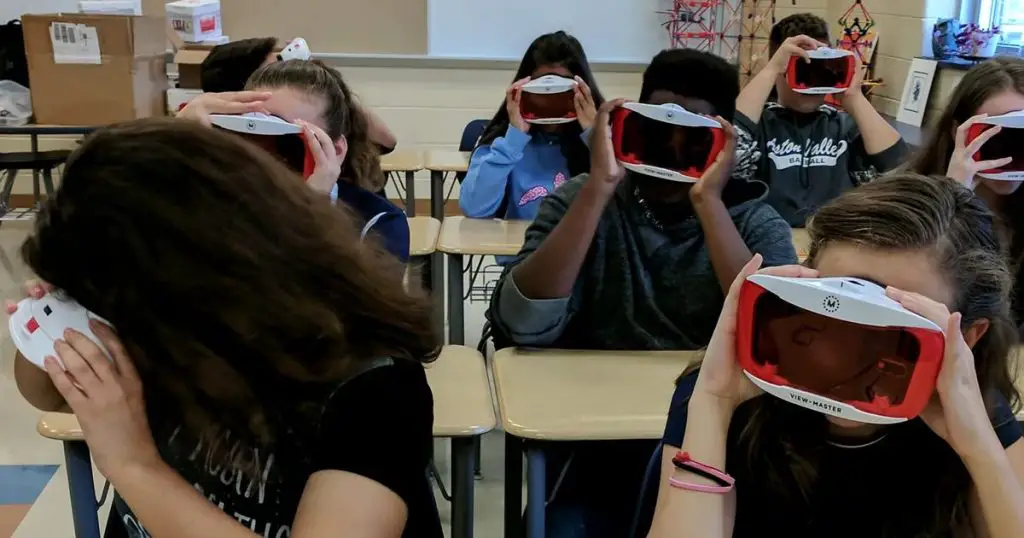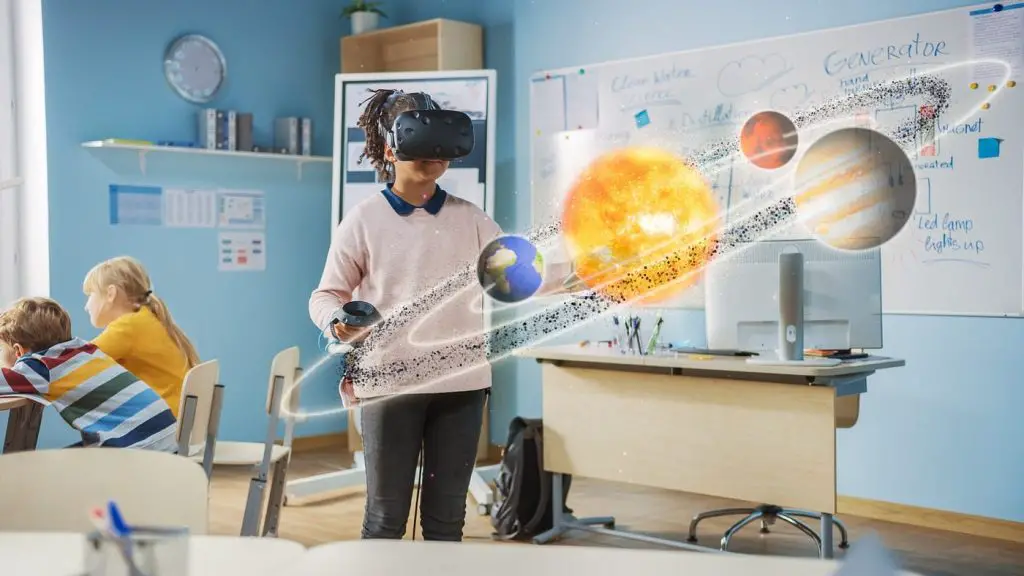
Virtual Reality (VR) is revolutionizing education by offering immersive and interactive learning experiences. It enables students to virtually visit historical landmarks, perform science experiments, and engage in practical activities, thereby improving understanding and involvement. However, while VR brings many advantages, its adoption in classrooms also presents challenges such as cost and technical support. Simultaneously, AI is transforming online learning by personalizing education—using data analytics to adapt content, pace, and support to individual student needs, making learning more effective and tailored.
Benefits of Virtual Reality in Education

VR allows students to learn actively through immersive experiences rather than passive listening. Platforms like Google Expeditions offer virtual field trips to historical sites, outer space, and underwater environments. In disciplines such as biology and physics, VR simulations provide a safe space for students to perform experiments without risks. This technology also enhances engagement and knowledge retention by making abstract concepts more concrete and interactive. Meanwhile, AI and IoT are driving sustainability in agriculture by optimizing resource use, monitoring crop health, and enabling precise farming practices—showcasing how technology across fields is transforming learning and real-world applications.
Challenges of Integrating VR in Classrooms

Despite its advantages, VR faces challenges in widespread adoption. The high cost of VR headsets and software makes it difficult for many schools to implement the technology. Additionally, teachers need proper training to effectively integrate VR into lesson plans. There are also concerns about screen time and potential health effects, such as motion sickness, that could impact students’ learning experiences.
The Future of VR in Education

As technology advances, VR is becoming more affordable and accessible for educational institutions. Companies like Meta and HTC are developing cost-effective VR solutions for classrooms. Governments and educational organizations are also investing in research to maximize VR’s potential in learning. With improvements in hardware and content, VR is expected to play a significant role in shaping the future of education.
Conclusion
Virtual Reality is revolutionizing the way students learn by offering immersive and interactive experiences. While cost and accessibility remain challenges, ongoing advancements in VR technology are making it more feasible for schools to adopt. As VR continues to evolve, its role in education will likely expand, providing students with new and exciting ways to engage with learning materials.